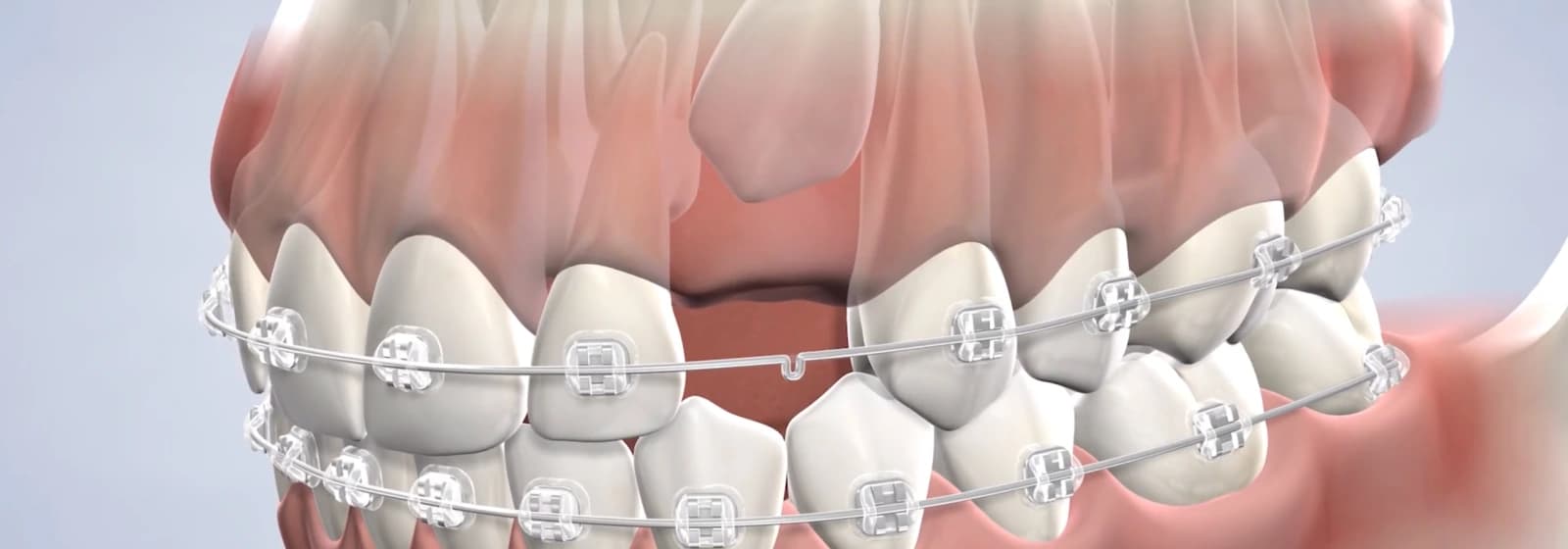In the mouth, there are two upper and two lower canine teeth positioned beneath the eyes. If a canine tooth’s path of eruption is blocked, it will become impacted, or trapped beneath the gums and will be unable to function properly. To treat an impacted canine, your oral surgeon and orthodontist will work together to expose the tooth and guide it into the dental arch. At Lubbock Dental Specialists, our board-certified oral surgeons, Dr. Graves and Dr. Wilkinson, collaborate with your orthodontist to manage impacted canines safely and effectively.
If your child has an impacted canine tooth or has been referred by a dentist to an oral surgeon to begin treatment, contact our practice in Lubbock or Amarillo, TX, to schedule an appointment. We make oral surgery a positive experience for our patients and their families and will create a custom care plan to fit your child’s needs.
The Importance of Canine Teeth
When a tooth is impacted or stuck beneath the gums, it cannot function properly and requires treatment. Wisdom teeth often become impacted, but because these molars are not necessary for oral function, they are simply extracted. Canine teeth (upper eye teeth or maxillary cuspids) are important for oral function, and every effort is made to help them erupt properly.
Canine teeth have the longest roots of any teeth. They are responsible for biting and tearing food and helping to guide the jaw into proper alignment. They are the first teeth to touch when the jaw closes and guide the other teeth into position, as well as maintain the shape of the mouth. When a canine tooth is impacted, the space where it should have erupted is left with either a small primary tooth or a gap between the other teeth. Treating an impacted tooth will improve oral function and the aesthetics of your child’s smile, which can help them feel more confident about their teeth.
When Are Exposure and Bonding Necessary?
Canine teeth often erupt around the age of 13, and treatment should begin around this time to help guide the impacted tooth into the dental arch. If an impacted canine tooth is left untreated, it may put pressure on adjacent teeth and nerves, which may cause damage and tooth pain. The tooth can resorb, or eat away, the roots of adjacent teeth, which may progress to tooth loss if left untreated for too long.
There are several reasons why a canine tooth may become impacted and require treatment, such as:
- Extra teeth in the mouth
- Overcrowding
- Growths on the soft tissue of the gums
Undergoing expose and bond treatment for an impacted canine tooth will ensure it functions properly, improve the appearance of the teeth, and protect your oral health from future complications. Early detection and treatment is key because if the canine tooth fuses to the jaw bone, it can become difficult to guide into position, often leaving no alternative but to extract the tooth and replace it with a dental implant.
Expose and Bond Treatment
The expose and bond treatment is a combined effort between your oral surgeon, who surgically exposes the tooth, and your orthodontist, who uses braces to guide the tooth into alignment. In most cases, your orthodontist will place braces on the teeth to create space for the impacted tooth to erupt. Once there is enough space, your child will visit an oral surgeon to surgically expose the tooth and attach a bracket.
We will take 3D scans to examine your teeth and create a custom treatment plan. If there are extra teeth in the mouth, we will extract them before exposing the impacted tooth. There are many anesthesia and sedation options available to ensure your child’s comfort during any type of procedure, and we will walk you through these options at the consultation.
To expose the tooth, the surgeon will make an incision in the gum tissue over the impacted tooth, then lift the gums and bond an orthodontic bracket to the tooth. This bracket will have a gold chain attached to it, which is connected to the arch wire of the braces. The gum is returned to its original location and sutured in place.
Braces will pull the tooth into its proper position gradually, as well as correct other misalignment issues or bite problems. The duration of your child’s orthodontic treatment will depend on other conditions that are being treated. Some patients complete orthodontic treatment in less than a year, while others require several years of treatment before their teeth reach the desired position.
Impacted Canine Treatment at Lubbock Dental Specialists
By helping an impacted canine tooth erupt into the dental arch, we can improve oral function and oral health. Contact Lubbock Dental Specialists in Lubbock or Amarillo, TX, today to schedule a consultation with our board-certified oral and maxillofacial surgeons, Dr. Graves and Dr. Wilkinson.

